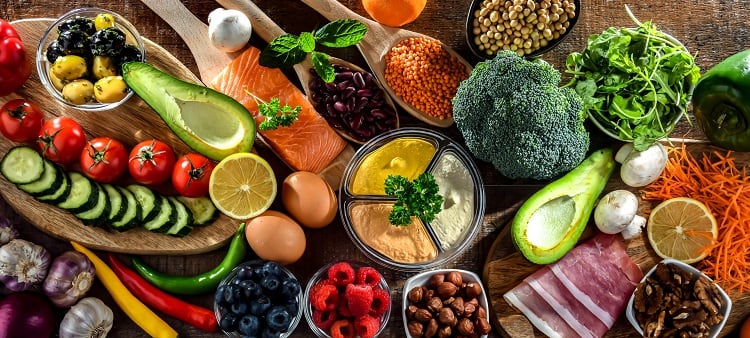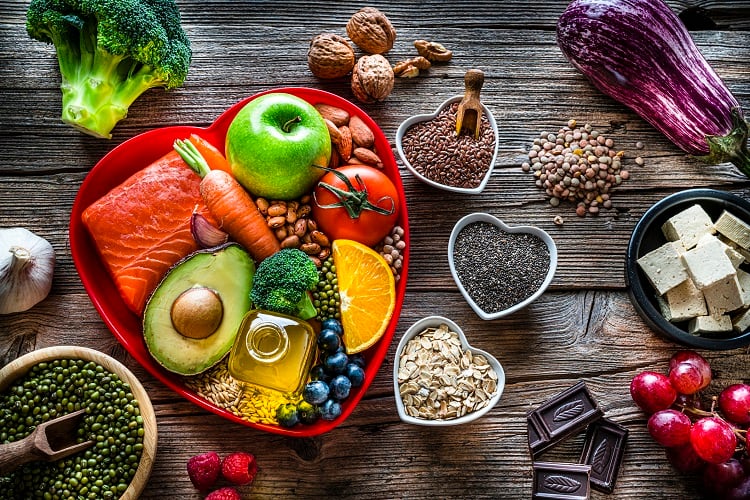In 2019 the EAT-Lancet Commission made waves when it published the world’s first scientific targets for a healthy diet that places food production within planetary boundaries.
To meet the dietary guidelines, researchers suggested that global consumption of red meat and sugar will need to decrease by more than 50% by 2050, while consumption of nuts, fruits, legumes and vegetables will need to increase more than two-fold. .
The planetary health diet was met with mixed reactions. Some have argued the protein requirements were inadequate, while more recent research suggests it could reduce death risk by 25%.
Now, fresh research led by the Global Alliance for Improved Nutrition (GAIN) suggests the diet does not provide enough essential vitamins and minerals to nourish the global population.
Inadequate micronutrient content
The research responded to concerns that essential micronutrient content was inadequate in the diet, particularly those generally found in higher quantities and in more bioavailable forms in animal source foods.
To address these concerns, the researchers matched each food group point estimate with the respective range with globally representative food composition data. They then compared the resulting dietary nutrient intakes with globally harmonised recommended nutrient intakes for adults and women of reproductive age for six micronutrients that are globally scarce.
Findings revealed that due to the large quantities of whole plant foods such as pulses, dark leafy vegetables, and vitamin A-rich fruits and vegetables in the EAT-Lancet diet, the estimated intakes of folate and vitamin A were adequate.
However, for adults and women of reproductive age, estimated intakes of vitamin B12, calcium, iron, and zinc were below recommended levels
For adults, estimated zinc intake was 78% of the recommended nutrient intake, calcium 86%, iron 90%, and vitamin B12 93% of the recommended nutrient intake.
Even more concerning, were the micronutrient intakes for women of reproductive age, with estimated iron just 55% of the recommended nutrient intake, calcium 84%, and zinc and vitamin B12 93% of the recommended nutrient intakes.
“The planetary health diet is likely to help protect against noncommunicable diseases, which are the leading causes of death and disease worldwide, and to do so sustainably. But these new findings on shortfalls in essential vitamins and minerals are concerning because deficiencies in these micronutrients can lead to severe and lasting effects, including compromised immune systems and increased risk for infections; hindered child growth, development and school performance; and decreased work productivity; all of which ultimately limit human potential,” said Dr Ty Beal, research advisor at the Global Alliance for Improved Nutrition (GAIN) and lead author of the publication.
Is the answer more animal source foods?
To amend these micronutrient deficiencies with food, rather than via supplements or fortification, the researchers suggest turning to minimally processed, intrinsically nutrient-dense foods.
They found that achieving a micronutrient adequate diet would be more feasible by increasing animal source foods from 14% of total kcal intake to 27% of total kcal intake, reducing dietary phytate from 1985mg to 1021mg to improve iron and zinc absorption, and allowing a 3:1 ratio of whole to refined grains.
This modified diet would increase daily intake of tubers and starchy vegetables by 161 kcal, increase daily intake of fish and shellfish by 105 kcal, increase daily intake of eggs by 60 kcal, beef by 45 kcal, chicken and other poultry by 30 kcal, and pork by 15 kcal.
Further, the modified diet would add an average daily intake of refined grains of 100 kcal, seeds by 100 kcal, and organ meats by 8 kcal.
To make room for these increases and enable an isocaloric diet, the modified diet would need to reduce daily intake of whole grains by 511 kcal, peanuts by 117 kcal, and intake of soy foods by 12 kcal.
For women of reproductive age, achieving adequate iron intakes without fortified foods or supplements can be particularly challenging, noted the researchers, and would require adherence to ‘very high’ intakes of iron-rich foods and few, if any, junk foods.
“The challenge in providing enough micronutrients is doing so sustainably. It is not clear exactly how much animal source food, and which types, could be sustainably produced worldwide: experts have different perspectives,” explained Dr Jessica Fanzo, Bloomberg Distinguished Professor of Food Policy at Johns Hopkins University and co-author of the study.
“But there is a limit. And there will inevitably be trade-offs to grapple with, between human health and environmental sustainability. It is important to use all available approaches to improve diets, including improving diet quality through nutrient-dense foods of both plant and animal origin, and food fortification and supplementation, which have limitations but can help fill micronutrient gaps sustainably and affordably.”
Source: The Lancet Planetary Health
'Estimated micronutrient shortfalls of the EAT-Lancet planetary health diet'
Published March 2023
DOI: https://doi.org/10.1016/S2542-5196(23)00006-2
Authors: Ty Beal, Flaminia Ortenzi, Jessica Fanzo




